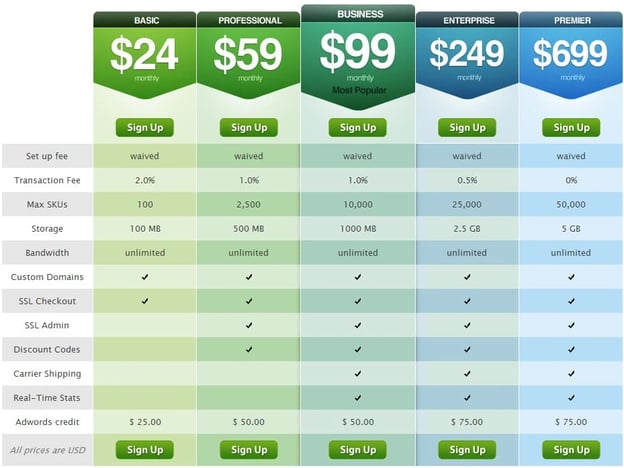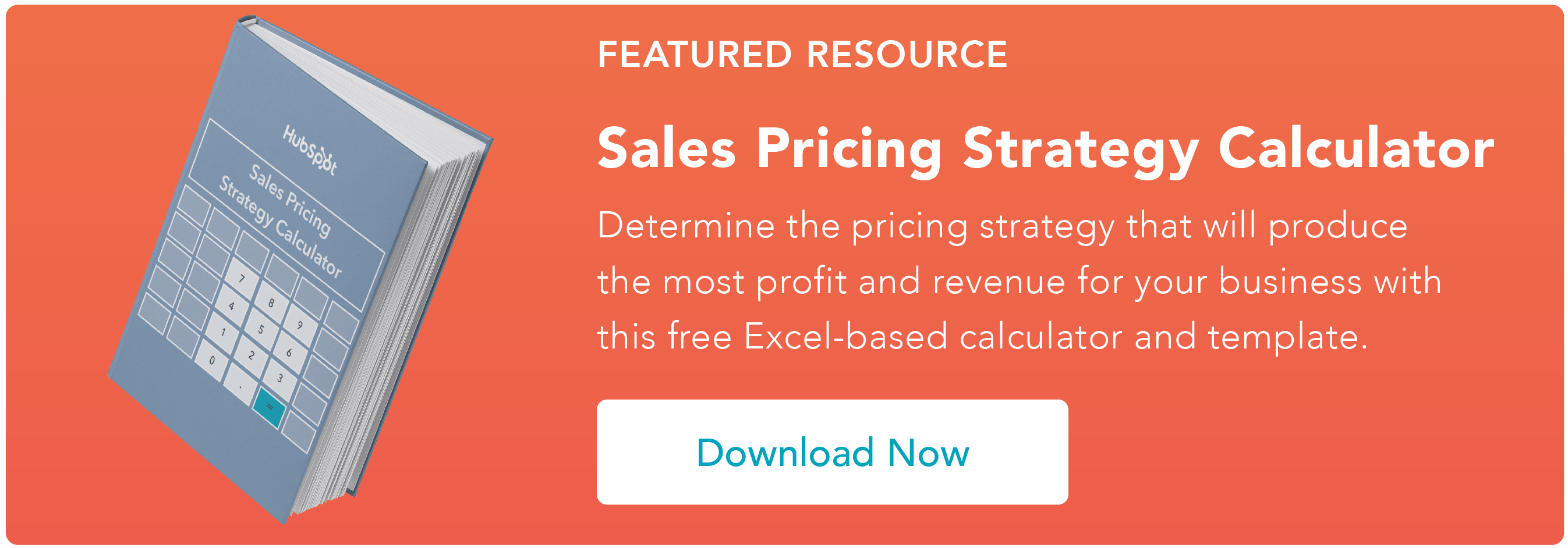If I had to guess, I would say roughly 500 different factors go into setting prices for products and services. Now, I realize that number might seem overblown — that might have something to do with the fact that it probably is.
I mean, there's a lot at play when hashing out prices for your offering, but 500 factors seems a bit over the top. Still, that "500" figure probably has you thinking already. It's in your head and will probably remain there — even after I present a more realistic number.
The phenomenon behind that inclination is known as "anchoring bias" — the natural tendency we have to use the first number we see as a benchmark for judgment in the context of a negotiation, purchase, or decision.
Here, we'll explore that concept a bit further — specifically how it can factor into a pricing strategy — and review some examples of what it might look like in effect.

What is price anchoring?
Price anchoring is a pricing strategy that plays on buyers' inherent tendency to rely heavily on a piece of initial information to guide subsequent decisions. In the context of pricing, many businesses will set a visible initial price for a product but make a point of showing that it's now being sold at a discount.
In practice, price anchoring might look something like this. Let's say you operate an ecommerce apparel retailer. You've recently designed a cool new t-shirt that's garnering interest from some consumers. Initially, you set the price for your product at $19.99. You drum up some buyer enthusiasm, but you think you can do better.
When you price your product at flatly $19.99 — without any additional flair or context — you create the impression that your product is worth exactly what you've priced it at. What your prospects see is exactly what they'll get
If you wanted to spice things up a bit and generate some more intrigue around your new shirt, you might consider implementing a price anchoring strategy. Here, that might mean including an initial price of $24.99 on your pricing page, crossing that price out, and displaying a "discounted" price of $19.99.
That's price anchoring in motion. By placing that initial display price on your product page, you're creating the impression that the shirt is worth $5.00 more than you're selling it for — even though your ideal price point is just $19.99.
By setting what is essentially a decoy price, you're playing on consumers' inherent tendency to use the first piece of information they see as a reference point for further decision-making. You've provided them with an anchor — a benchmark for understanding the value of your product.
Price Anchoring Examples
Strike-Through Retail Pricing
Strike-through retail pricing is one of the most common, easily recognizable forms of price anchoring — and its nature is pretty obviously reflected in its name.
Businesses that employ this strategy advertise a higher price in a product description, cross that price out, and place a discounted price underneath. Here's an example of what that might look like:

Image Source: Truthinadvertising.org
Comparative Package Pricing
Another price anchoring structure you might have run into is comparative package pricing — often in the form of a psychological pricing methodology called bracketing.
When leveraging this technique, companies lead buyers to their preferred products, often by offering three choices — a budget option, a preferred median option, and a premium option at varying price points
The logic here rests on the concept of extremeness aversion — the human tendency to avoid extreme options in favor of intermediate ones. Let's say you're pricing a gaming console. You offer three separate iterations — lite, standard, and pro — at different price points.
You're looking to make the standard option as appealing as possible. The lite option has fewer features than the standard model, and the pro option isn't of considerably higher-quality than the tier below it. The two extreme options are your anchors — priced specifically to guide buyers toward your preferred option.
Here's an example with a few additional anchors thrown in:

Image Source: AGConsult
Comparing Prices with Competitors
Another way some businesses leverage price anchoring is through competitive comparisons. They use competitors' prices as anchors — presenting their options as naturally significant bargains. Here's an example from Sprint:

Image Source: BusinessWire
When Price Anchoring Doesn't Work
Price anchoring isn't always some lights-out, slam dunk that you can bank on for every product you sell. There are some instances where it just flat-out doesn't work.
When You Try to Sway Particularly Savvy Buyers
Particularly well-informed buyers — or ones that might take extra time to research how much your product is actually worth — are often unmoved by price anchoring. If you're clearly bluffing or overvaluing your offering with your price anchor, they'll see through your strategy.
That often leads to them rejecting your pricing structure outright. They understand your markup and might see your anchoring as cheap or dishonest — or they could notice that your "discounted" price isn't particularly compelling relative to your competitors.
When You're Selling Products That Consumers Are Already Familiar With
If you’re planning to sell products that people are already familiar with, your price anchoring won’t help you much. Sometimes, consumers know what certain products are actually worth, so the anchors you set
You may be able to get away with slightly elevated price tags for items that are perceived to be of better quality than others, but consumers will generally go where they can get the best deal.
Price anchoring is commonplace for a reason. When done right, it can be an extremely effective way to play on buyers' implicit biases and tendencies and make hard sales. And while mastering it might be a tricky process, it's worth taking some time to figure it out.

